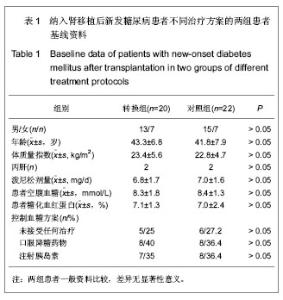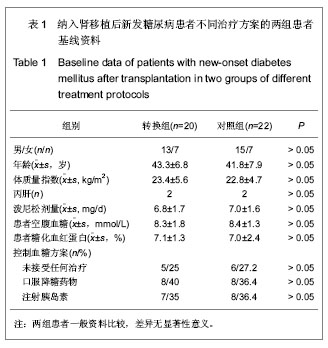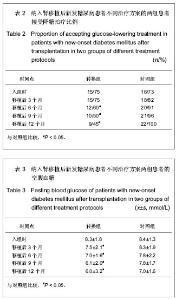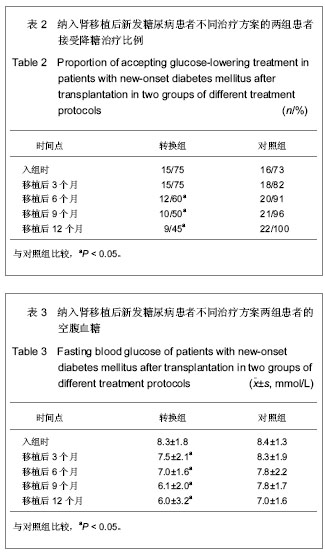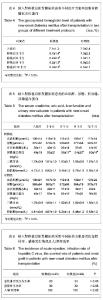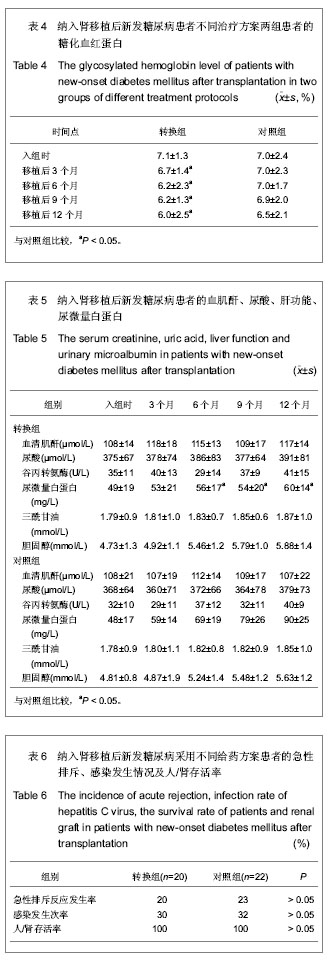| [1] Borel JF,Feurer C,Gubler HU,et al.Biological effects of cyclosporin A:a new antilymphocytic agent. Agents Actions. 1976;6(4):468-475.[2] Calne RY,White DJ,Thiru S,et al. Cyclosporin A in patients receiving renal allografts from cadaver donors. Lancet. 1978; 2(8104-8105):1323-1327.[3] Li JL,Wang XD,Wang CX,et al.Rapid and simultaneous determination of tacrolimus(FK506) and diltiazenm in human whole blood by liquid chromatography-tandem mass spectrometry:application to a clinical drug-drug interaction study.J Chromatogr B Analyt Technol Biomed Life Sci.2008; 867(1):111-118.[4] Staatz CE,Goodman Lk,Tett SE.Effect of CYP3A and ABCB1 single nucleotide polymorphisms on the pharmacokinetics and pharmacodynamics of calcineurin inhibitors:part II.Clin Pharmacokinet.2010;49(4):207-221.[5] Vicari-Christensen M, Repper S, Basile S, et al. Tacrolimus: review of pharmacokinetics, pharmacodynamics, and pharmacogenetics to facilitate practitioners' understanding and offer strategies for educating patients and promoting adherence. Prog Transplant. 2009;19(3):277-284.[6] Shi XJ,Geng F,Jiao Z, et al.Association of ABCB1, CYP3A4*18B and CYP3A5*3 genotypes with the pharmacokinetics of tacrolimus in healthy Chinese subjects:a population pharmacokinetics analysis.J Clin Pharm Ther.2011; 36(5):614-624.[7] Miura M, Niioka T, Kagaya H, et al. Pharmacokinetics determinants for interindividual difference of tacrolimus pharmacokinetics 1 year after renal transplantation.J Clin Pharm Ther.2011;36(2):208-216.[8] Montori VM,Basu A,Erwin PJ,et al.Post transplantation diabetes:systematic review of the literature.Diabetes Care. 2002;25(3):583-592.[9] Hur KY,Kim MS,Kim YS,et al.Risk factors associated with the onset and progression of the posttransplantation diabetes in renal allograft recipients. Diabetes Care. 2007;30(3):609-615.[10] Shah T,Kasravi A,Huang E,et al.Risk factors for development of new onset diabetes mellitus after kidney transplantation. Transplantation.2006;82(12):1673-1676.[11] Ojo AO.Cardiovascular complications after renal transplantation and prevention. Transplantation. 2006;82(5): 603-611.[12] Hjelmesaeth J,Hartmann A,Leivestad T,et al.The impact of early-diagnosed new-onset post transplantation diabetes mellitus on survival and major cardiac events. KIndey Int. 2006;69(3):588-595.[13] Woodward RS,Schnitzler MA,Baty J,et al.Incidence and cost of new onset diabetes mellitus among US wait-listed and transplanted renal allograft recipients.Am J Transplant.2003; 3(5):590-598.[14] Vincenti F,Friman S,Scheuermann E,et al.Results of an international,randomized trial comparing glucose metabolism disorders and outcome with cyclosporine versus tacrolimus.Am J Transplant.2007;7(6):1506-1514.[15] Wilkinson A,Davidson J,Dotta F,et al. Guidelines for the treatment and management of new-onset diabetes after transplantation.Clin transplant.2005;19(3):291-298.[16] Balla A,Chobanian M.New-onset diabetes after transplantation: a review of recent literature.Curr Opin Organ Transplant.2009;14(4):375-379.[17] 石炳毅,王振,郑慧丽,等.肾移植受着远期心脑血管疾病危险因素分析[J].中国医学科学院学报,2009,31(3):284-287.[18] Kasiske BL,Snyder JJ,Gilbertson D,et al.Diabetes mellitus after kidney transplantation in the United States.Am J Transplant.2003;3(2):178-185.[19] Kasiske BL,Guijarro C,Masssy ZA,et al.Cardiovascular disease after renal transplantation.J Soc Nephrol. 1996; 7(1):158-160.[20] Burroughs TE,Swindle J,Takemoto S,et al.Diabetic complications associated with new-onset diabetes mellitus in renal transplant recipients. Transplantation.2007;83(8): 1027-1034.[21] Turner R,Cull C,Holmon R.United Kingdom Prospective Study 17:A 9-year update of a randomized,controlled trialon the effect of improved metabolic control on complications in non-insulin-dependent diabetes mellitus.Ann Intern Med. 1996;124(1):136-145.[22] Cole EH,Johnston O,Rose CL,et al.Impact of acute rejection and new-onset diabetes on long-term transplant graft and patient survival.Clin J AM Soc Nephrol.2008;3(3):814-821.[23] Ekberg H,Tedeseo-Silva H,Demirbas A,et al.Reduced exposure to calcineurin inhibitors in renal transplantation.N Engl J Med.2007;357(25):2562-2575.[24] Hjelmesaeth J,Hartmann A,Kofstad J,et a1.Tapering off prenisolone and cyclosporine the first year after renal transplantation:the effect on glucose tolerance.Nephrol Dial Transplant. 2001;16(4):829-835.[25] Boots JM,Van Duijnhoven EM,Christianns MH,et al.Glucose metabolism in renal transplant recipients on tacrolimus:the effect of steroid withdrawal and tacrolimus tough level reduction. J Am Soc Neprhol.2002;13(1):221-227.[26] 许晓婷,黄赤兵,范明齐.肾移植术后新发糖尿病患者的免疫抑制方案转换[J].中华内分泌外科杂志,2012,6(6):375-378.[27] 沈秀芬,李江,梁先念. 糖化血红蛋白与尿微量蛋白检测早期诊断糖尿病肾病的意义[J].检验医学与临床.2009;5(6):352-354. [28] Salem MA,El Habashy SA,Saeid OM,et al. Urinary excretion of nacetyl beta D glucosaminidase and retinol binding protein as alternative indicators of nephropathy in patients with type 1 diabetes mellitus. Pediatr Diabetes.2002;3(3):37-41. [29] Lane JT. Microalbuminuria as a marker of cardiovascular and renal risk in type 2 diabetes mellitus:a temporal perspective. Am J Physiol Renal Physiol. 2004;286(2):F442-450.[30] Cook AM, Whitlow J, Hatton J, et al. Cyclosporine A for neuroprotection: establishing dosing guidelines for safe and effective use. Expert Opin Drug Saf. 2009;8(4):411-419[31] Masuo T, Okamura S, Zhang Y, et al. Cyclosporine A inhibits colorectal cancer proliferation probably by regulating expression levels of c-Myc, p21(WAF1/CIP1) and proliferating cell nuclear antigen. Cancer Lett. 2009;285(1):66-72.[32] Marcen R, Pascual J, Temel JL, et al. Outcome of cadevaric renal transplant patients treated for 10 years with cyclosporine. Transplantation. 2001;72(1):57-62.[33] Pascual M, Theruvath T, Kawai T, et al. Strategies to improve long-term outcomes after renal transplantation. N EngI J Med. 2002;346(8):580-584.[34] 吴斌,苏兰,徐珽,等.他克莫司替代环孢素A防治移植物抗宿主病的Meta分析[J].中国医院药学杂志,2009,29(22):1957-1959.[35] Bergrem HA, Valderhau TG, Hartmann A,et al.Glucose tolerance before and after renal transplantation. Transplant. 2010;25(3):985-992.[36] Caillard S, Eprinchard L, Perrin P,et al. Incidence and risk factors of glucose metabolism disorders in kidney transplant recipients: role of systematic screening by oral glucose tolerance test. Transplantation.2011;91(7):757-764.[37] Armstrong KA, Prins JB, Beller EM,et al.Should an oral glucose tolerance test be performed routinely in all renal transplant recipients?. Clin J AM Soc Nephrol. 2006;1(1): 100-108. |
